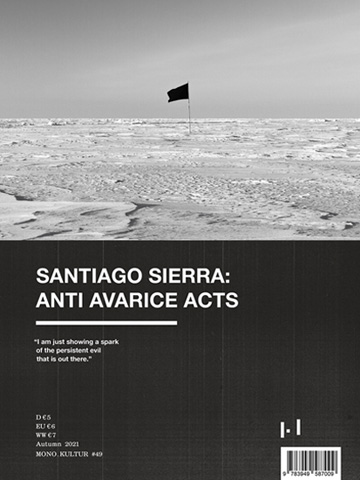
There isn’t much we can add to the excellent review over at magCulture as far as the design of our latest issue featuring the great Gus van Sant is concerned. Like van Sant’s cinema, the issue is a quiet affair, setting up a few basic rules and systems and then focusing primarily on the visual rhythm. Graphically, the issue is essentially divided into two currents, horizontal and vertical – the horizontal plane made up of an endless stream of American landscapes taken from Gus van Sant’s films, drifting by like road trip impressions, occasionally interrupted by subtly surreal moments. They make for a perfect balance / background for the vertical current, namely the interview which hovers above and into the scenery, interspersed with a few strategically placed screenshots.

However, what is also interesting is the interaction between word and text, and one of the aspects that make mono.kultur special: we were writing the introduction while the design was slowly taking shape, which semi-consciously impacted on how we introduced the issue, opening with the paragraphs following below– which then in turn helped clarify not only our view of Gus van Sant’s work, but also how that work should translate onto paper. Because, in a way, the introduction could also be read as a description of the design of the issue:

There is a remarkable scene in Elephant, Gus van Sant’s astonishing 2003 treatise of the Columbine High School massacre, with the camera resting still in an area on the school’s sports fields, students drifting in and out of the picture, voices and ambient sounds reaching in from beyond the frame. Nothing much happens, really, but it captures so quietly and perfectly a moment of everyday beauty, overshadowed by the vague knowledge of what’s to come.
Gus van Sant’s cinema is a little like that: a steady flow in time, as if it were encountering stories, characters, landscapes by chance. People and places and lives that float into the sight of the camera, attracting its attention for long enough to commit them to film before moving ever onward. Stories like fragments and memories, blending into a choir of life, into a unison body of work defined by the gentle and quiet gaze of the director.
Design by Linda Riedl

